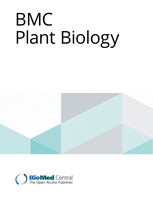Ver ítem
- xmlui.general.dspace_homeCentros e Institutos de InvestigaciónCICVyA. Centro de Investigación en Ciencias Veterinarias y AgronómicasInstituto de BiotecnologíaArtículos científicosxmlui.ArtifactBrowser.ItemViewer.trail
- Inicio
- Centros e Institutos de Investigación
- CICVyA. Centro de Investigación en Ciencias Veterinarias y Agronómicas
- Instituto de Biotecnología
- Artículos científicos
- Ver ítem
Association mapping in sunflower for sclerotinia head rot resistance
Resumen
Background: Sclerotinia Head Rot (SHR) is one of the most damaging diseases of sunflower in Europe, Argentina, and USA, causing average yield reductions of 10 to 20 %, but leading to total production loss under favorable environmental conditions for the pathogen. Association Mapping (AM) is a promising choice for Quantitative Trait Locus (QTL) mapping, as it detects relationships between phenotypic variation and gene polymorphisms in existing germplasm
[ver mas...]
Background: Sclerotinia Head Rot (SHR) is one of the most damaging diseases of sunflower in Europe, Argentina, and USA, causing average yield reductions of 10 to 20 %, but leading to total production loss under favorable environmental conditions for the pathogen. Association Mapping (AM) is a promising choice for Quantitative Trait Locus (QTL) mapping, as it detects relationships between phenotypic variation and gene polymorphisms in existing germplasm without development of mapping populations. This article reports the identification of QTL for resistance to SHR based on candidate gene AM.
Results: A collection of 94 sunflower inbred lines were tested for SHR under field conditions using assisted inoculation with the fungal pathogen Sclerotinia sclerotiorum. Given that no biological mechanisms or biochemical pathways have been clearly identified for SHR, 43 candidate genes were selected based on previous transcript profiling studies in sunflower and Brassica napus infected with S. sclerotiorum. Associations among SHR incidence and haplotype polymorphisms in 16 candidate genes were tested using Mixed Linear Models (MLM) that account for population structure and kinship relationships. This approach allowed detection of a significant association between the candidate gene HaRIC_B and SHR incidence (P < 0.01), accounting for a SHR incidence reduction of about 20 %.
Conclusions: These results suggest that AM will be useful in dissecting other complex traits in sunflower, thus providing a valuable tool to assist in crop breeding.
[Cerrar]

Fuente
BMC Plant Biology 12 : 93 (2012)
Fecha
2012-06
Editorial
BMC
ISSN
1471-2229
Formato
pdf
Tipo de documento
artículo
Palabras Claves
Derechos de acceso
Abierto
 Excepto donde se diga explicitamente, este item se publica bajo la siguiente descripción: Creative Commons Attribution-NonCommercial-ShareAlike 2.5 Unported (CC BY-NC-SA 2.5)
Excepto donde se diga explicitamente, este item se publica bajo la siguiente descripción: Creative Commons Attribution-NonCommercial-ShareAlike 2.5 Unported (CC BY-NC-SA 2.5)


